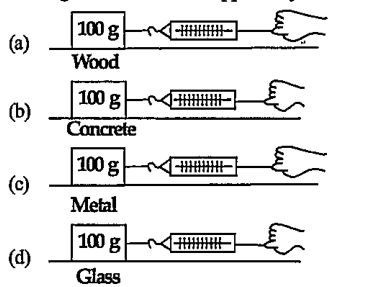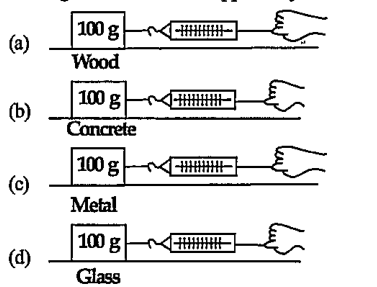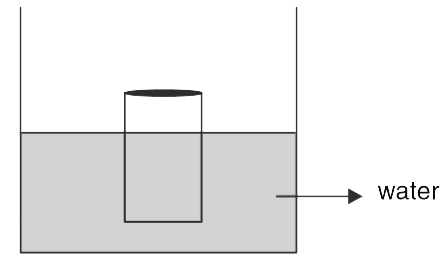A iiver inside the sea observes a ship on the water surface. Does he finds the ship taller or smaller then its actual height above the water surface. Give reason and draw ray diagram to support your logic.
Step by step video & image solution for A iiver inside the sea observes a ship on the water surface. Does he finds the ship taller or smaller then its actual height above the water surface. Give reason and draw ray diagram to support your logic. by Physics experts to help you in doubts & scoring excellent marks in Class 12 exams.
Topper's Solved these Questions
- BOOK - PHYSICS GALAXY - ASHISH ARORACHAPTER - GEOMETRICAL OPTICSEXERCISE - Conceptual MCQs Single Option Correct43videos
GEOMETRICAL OPTICS
- BOOK - PHYSICS GALAXY - ASHISH ARORACHAPTER - GEOMETRICAL OPTICSEXERCISE - Numerical MCQs Single Options Correct51videos
GEOMETRICAL OPTICS
- BOOK - PHYSICS GALAXY - ASHISH ARORACHAPTER - GEOMETRICAL OPTICSEXERCISE - Practive Exercise 5.95videos
GEOMETRICAL OPTICS
- BOOK - PHYSICS GALAXY - ASHISH ARORACHAPTER - ELECTROSTATICSEXERCISE - Unsolved Numberical Problems73videos
ELECTROSTATICS
- BOOK - PHYSICS GALAXY - ASHISH ARORACHAPTER - HEAT AND THERMAL EXPANSIONEXERCISE - UNSOLVED NUMRICAL PROBLEMS FOR PREPARATION OF NSEP, INPhO & IPhO82videos
HEAT AND THERMAL EXPANSION
Similar Questions
A student holding a mirror in his hand, directed the reflecting surface of the mirror towards the Sun. He then directed the reflected light on to a sheet of paper held close to the mirror.
Will he be able to determine the approximate value of focal length of this mirror form this activity? Give reason and draw ray diagram to justify your answer in this case.View SolutionA student, holding a mirror in his hand, directed the reflecting surface of the mirror towards the sun. He then directed the reflected light on to a sheet of paper held close to the mirror.
(a) What should he do to burn the paper ?
(b) Which type of mirror does he use ?
(c) Will he be able to determine the approximate value of focal length of this mirror from this activity ? Give reason and draw ray diagram to justify your answer in this case.View Solution
Knowledge Check
- Question 1 - Select One
Sanjana performed an experiment to find the amount of force needed to move a 100 g weight over different surfaces. Which of the following scales would show the smaller reading? Give reason in support of your answer.
A B
B C
C D
D
A diver under water sees a bird in air, vertically above him. If the actual, height of the bird above the water surface is 'h' , then does it appear at the same height 'h' to the diver ? Explain giving reasons. If μw is the refractive index of water, find the shift in the bird's position as observed by the diver.
View SolutionA parallel bean of light travelling in water (refractie index =43) is refracted by a spohereical bubble of radius 2 mm situation in water. Assuming the light rays to be paraxial. i. find the position of the image due to refraction at the first surface and the positoin of the final image, and ii draw a ray diagram showing the positions of oth the images.
View SolutionA cyclindrical ice block is floating in water 10% of its total volume is outside water. Kerosene oil (relative density=0.8) is poured slowly on top of water in the container. Assume that the oil does not mix with water. Height of the ice cylinder is H.

(a) As kerosene is poured, how does the volume of ice block above the water level change?
(b) What is the thickness of kerosene layer above the water when 20% of the volume of the ice block is above the water surface?
(c) Find the ratio of voume of ice block is kerosene to its volume in water after the kerosene layer rises above the top surface of ice and the block gets completely submerged. Neglect any melting of ice.View SolutionA fish in a water tank sees the outside world as if it (the fish) is at the vertex of cone such that the circular base of the cone coincides with the surface of water. Given the depth of water where fish is located being h and the critical angle for water-air interface being ic, find out by drawing a suitable ray diagram the relationship between the radius of the cone and the height h.
View SolutionThe Hadza
"The Hadza are a small group of hunters and gatherers, living in the vicinity of Lake Eyasi, a salt, rift-valley lake…. They country of the eastern Hadza, dry, rocks savanna, dominated by thorn scrub and acacia trees… is rich in wild foods. Animals are exceptionally numerous and were certainly commoner at the beginning of the century.
Elephant, rhinoceros, buffalo, giraffe, zebra, waterbuck, gazelle, warthog, baboon, lion, leopard, and hyena are all common, as are smaller animals such as porcupine, hare, jackal, tortoise and many others. All of these nimals, apart from the elephant, are hunted and eaten by the Hadza. The amount of meat that could be regularly eaten without endangering the future of the game is probably greater than anywhere else in the world where hunters and gatherers live or have lived in the recent past.
Vegetable food-roots, berries, the fruit of the baobab tree, etc-though not often obvious to the casual observer, is always abudant even at the height of the dry season in a year of drought. The type of vegetable food available is different in the six-month wet season from dry season but there is no period of shortage. The honey and grubs of seven species of wild bee are eaten, supplies of these vary from season-to-season and from year-to-year.
Sources of water are widly distributed over the country in the wet season but are very few in the dry season. The Hadza consider that about 5-6 kilometres is the maximum distance over which water can reasonable be carried and camps are normally sited within a kilometre of a water course.
The eastern Hadza assert no rights over land and its resources. Any individual may live wherever he likes and may hunt animals, collect roots, berries, and honey and draw water anywhere in Hadza country without any sort of restriction.....
In spite of the exceptional numbers of game animals in their area, the Hadza rely mainly on wild vegetable, while meat and honey together account for the remaining 20 per cent.
Camps are commonly small and widely dispersed in the wet season, large and concentrated near the few available sources of water in the dry season.
There is never any shortage of food even in the time of drought.
(ii) Describe the dietary habits of Hadza group.View SolutionThe Hadza
"The Hadza are a small group of hunters and gatherers, living in the vicinity of Lake Eyasi, a salt, rift-valley lake…. They country of the eastern Hadza, dry, rocks savanna, dominated by thorn scrub and acacia trees… is rich in wild foods. Animals are exceptionally numerous and were certainly commoner at the beginning of the century.
Elephant, rhinoceros, buffalo, giraffe, zebra, waterbuck, gazelle, warthog, baboon, lion, leopard, and hyena are all common, as are smaller animals such as porcupine, hare, jackal, tortoise and many others. All of these nimals, apart from the elephant, are hunted and eaten by the Hadza. The amount of meat that could be regularly eaten without endangering the future of the game is probably greater than anywhere else in the world where hunters and gatherers live or have lived in the recent past.
Vegetable food-roots, berries, the fruit of the baobab tree, etc-though not often obvious to the casual observer, is always abudant even at the height of the dry season in a year of drought. The type of vegetable food available is different in the six-month wet season from dry season but there is no period of shortage. The honey and grubs of seven species of wild bee are eaten, supplies of these vary from season-to-season and from year-to-year.
Sources of water are widly distributed over the country in the wet season but are very few in the dry season. The Hadza consider that about 5-6 kilometres is the maximum distance over which water can reasonable be carried and camps are normally sited within a kilometre of a water course.
The eastern Hadza assert no rights over land and its resources. Any individual may live wherever he likes and may hunt animals, collect roots, berries, and honey and draw water anywhere in Hadza country without any sort of restriction.....
In spite of the exceptional numbers of game animals in their area, the Hadza rely mainly on wild vegetable, while meat and honey together account for the remaining 20 per cent.
Camps are commonly small and widely dispersed in the wet season, large and concentrated near the few available sources of water in the dry season.
There is never any shortage of food even in the time of drought.
(i) What do you know about Hadza group?View SolutionA man on the deck of a ship is 10m above the water level. He observes that the angle of elevation of the top of a cliff is 45o and the angle of depression of the base is 30o . Calculate the distance of the cliff from the ship and the height of the cliff.
View Solution

